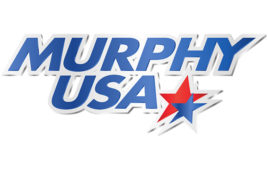One of the most important things to remember is storm insurance and flood insurance are not one in the same.
Just as residents and businesses are still recovering from Hurricane Florence on the East Coast, millions of Americans are readying for the potential threat of tropical storm Rosa. Flood watches are in effect across portions of California, Arizona, Nevada and Utah
In 2017, following Hurricane Harvev, which caused $125 billion in damage, some convenience store owners learned the hard way that hurricane claims are denied because of how flooding is defined by insurers.
Through the National Association of Insurance Commissioners (NAIC), state insurance regulators establish standards and best practices, conduct peer review, and coordinate their regulatory oversight. According to NAIC, one of the most important things to remember is storm insurance and flood insurance are not one in the same:
- To be considered a flood, water must have come from outside the property.
- To be considered flood, the water that causes the damage must have covered at least two acres or have affected at least one other property
- Mold and mildew damage occurring from flood damage is not covered by an NFIP policy.
- Business interruption is not covered under an NFIP flood policy; any financial losses caused by business interruption is not covered under an NFIP flood policy.
- Money and valuable papers destroyed in a flood is not covered.
- Some states require an extra windstorm policy to be purchased.
FLOOD INSURANCE
Problems can quickly rise when property owners don’t think they need flood insurance if they do not live in a flood zone. The recent events such as Hurricane Harvey and Hurricane Florence have shown that flooding can occur even if a property is not in a flood zone. NAIC outlines for owners parameters under the National Flood Insurance Program (NFIP), including:
- The NFIP offers policies for business structures ($500,000), business contents ($500,000), and renter contents ($100,000).
- NFIP policies do not cover damage to items in a basement, except for things such as furnace, water heaters and circuit breakers.
- If flood damages a business, the business may be required either by law or by ordinance to meet certain building compliancy requirements in your community to reduce future flood damage. This is called “increased cost of compliance coverage.”
- There is a 30 day waiting period from date of purchase of an NFIP policy before the policy goes into effect. There are a few exceptions.
- NFIP policies have separate deductibles for building and contents coverages.
- There may be private flood insurance available in your state. Private flood insurance must be at least equivalent to that offered by the NFIP. Private flood insurance may also offer additional coverages that the NFIP policies do not have.
- An insurance agent is able to determine premium costs.
Additional flood information can be found here: https://www.naic.org/documents/cmte_c_trans_read_wg_related_flood_insurance_basics_v4.pdf.




